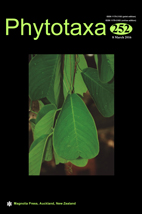Abstract
Taxonomy and species richness estimates for the genus Caulerpa have proven challenging due to the difficulty of assessing morphological species limits. In the present study we evaluate the taxonomy of the genus and assess species distributions in the Eastern Tropical Pacific (ETP), based on morphology and tufA sequence data. Molecular analyses revealed six species-level clades: C. verticillata, C. sertularioides, C. cupressoides, C. serrulata, C. racemosa and C. chemnitzia (part of C. racemosa-peltata complex). Our results reduce species richness estimates throughout the ETP by over 54% (from 13 to 6). In accordance with recent studies, our morphological and DNA results warrant the recognition of C. chemnitzia to comprise the morphological entities C. laetevirens, C. peltata and C. vanbossea complex. We continue the use of ecads as a practical identification tool for morphological diversity below the species level present in the ETP. In addition we formally recognize the synonymy of C. racemosa var. macrophysa with the lineage of C. racemosa proposed in recent studies. The six species of Caulerpa found in this study are of pantropical in distribution. Within the ETP region, four species have restricted distributions (C. verticillata, C. cupressoides, C. serrulata, C. racemosa), while two show a wide latitudinal distribution (C. chemnitzia and C. sertularioides).

